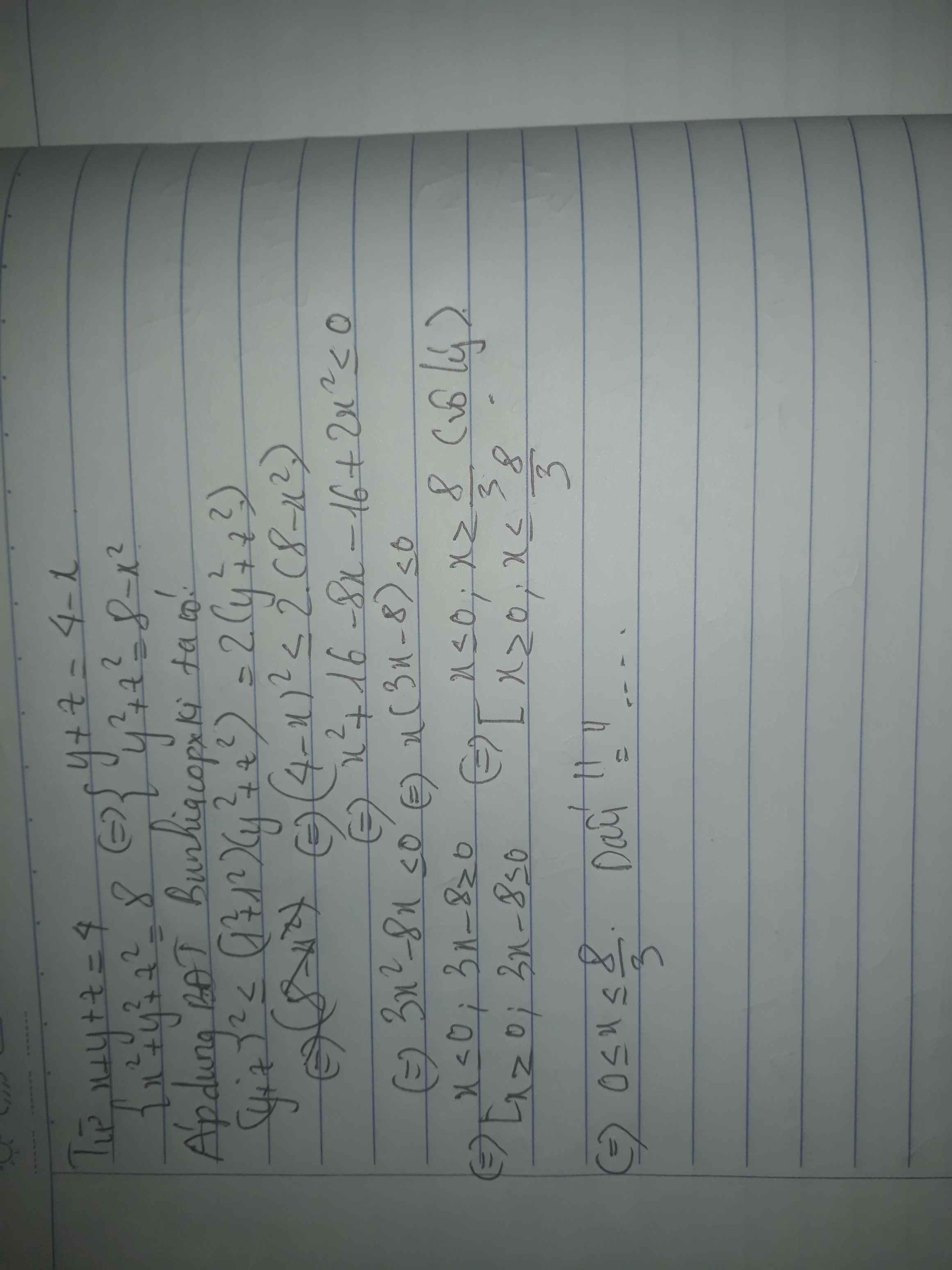1) Cho \(A=\dfrac{x+2}{x+3}-\dfrac{5}{x^2+x-5}+\dfrac{1}{2-x}\)
a) Rút gọn A
b) Tìm x để A>0
c) Tìm \(x\in z\) để \(\left\{{}\begin{matrix}A>0\\A\in Z\end{matrix}\right.\)
2) Cho \(B=\left(\dfrac{2x}{2x^2-5x+3}-\dfrac{5}{2x-3}\right):\left(3+\dfrac{2}{1-x}\right)\)
a) Rút gọn B
b) Tìm x để \(B=\dfrac{1}{x^2}\)
HELP ME!!!!!


\(A=\dfrac{x+2}{x+3}-\dfrac{5}{x^2+x-6}+\dfrac{1}{2-x}\) ( Chữa đề nhé.)
a) \(ĐKXĐ:x\ne-3;x\ne2\)
\(\text{Với }x\ne-3;x\ne2,\text{ ta có: }A=\dfrac{x+2}{x+3}-\dfrac{5}{x^2+x-6}+\dfrac{1}{2-x}\\ =\dfrac{x+2}{x+3}-\dfrac{5}{\left(x+3\right)\left(x-2\right)}-\dfrac{1}{x-2}\\ =\dfrac{\left(x+2\right)\left(x-2\right)}{\left(x+3\right)\left(x-2\right)}-\dfrac{5}{\left(x+3\right)\left(x-2\right)}-\dfrac{x+3}{\left(x-2\right)\left(x+3\right)}\\ =\dfrac{x^2-4-5-x-3}{\left(x-2\right)\left(x+3\right)}\\ =\dfrac{x^2-x-12}{\left(x-2\right)\left(x+3\right)}\\ =\dfrac{\left(x+3\right)\left(x-4\right)}{\left(x-2\right)\left(x+3\right)}\\ =\dfrac{x-4}{x-2}\\ \text{Vậy }A=\dfrac{x-4}{x-2}\text{ với }x\ne-3;x\ne2\)
b) Lập bảng xét dấu:
\(\Rightarrow\left[{}\begin{matrix}x< 2\\x>4\end{matrix}\right.\)
Vậy để \(A>0\) thì \(x< 2\) hoặc \(x>4\)
c) \(\text{Với }x\ne-3;x\ne2\)
\(\text{Ta có : }A=\dfrac{x-4}{x-2}=\dfrac{x-2-2}{x-2}\\ =\dfrac{x-2}{x-2}-\dfrac{2}{x-2}=1-\dfrac{2}{x-2}\)
\(\Rightarrow\) Để A nhận giá trị nguyên
thì \(\Rightarrow\dfrac{2}{x-2}\in Z\)
\(\Rightarrow2⋮x-2\\ \Rightarrow x-2\inƯ_{\left(2\right)}\)
Mà \(Ư_{\left(2\right)}=\left\{\pm1;\pm2\right\}\)
Lập bảng giá trị:
\(\Rightarrow x\in\left\{-2;-1;1;2\right\}\)
Vậy với \(x\in\left\{-2;-1;1;2\right\}\)
thì \(A\in Z\)
Câu 2:
a) \(ĐKXĐ:x\ne\dfrac{3}{2};x\ne1\)
\(\text{Với }x\ne\dfrac{3}{2};x\ne1,\text{ ta có : }B=\left(\dfrac{2x}{2x^2-5x+3}-\dfrac{5}{2x-3}\right):\left(3+\dfrac{2}{1-x}\right)\\ =\left[\dfrac{2x}{\left(2x-3\right)\left(x-1\right)}-\dfrac{5\left(x-1\right)}{\left(2x-3\right)\left(x-1\right)}\right]:\left(\dfrac{3\left(1-x\right)}{1-x}+\dfrac{2}{1-x}\right)\\ =\dfrac{2x-5x+5}{\left(2x-3\right)\left(x-1\right)}:\dfrac{3-3x+2}{\left(1-x\right)}\\ =\dfrac{\left(-3x+5\right)\cdot\left(1-x\right)}{\left(2x-3\right)\left(x-1\right)\cdot\left(-3x+5\right)}\\ =-\dfrac{1}{2x-3}\)
Vậy \(B=-\dfrac{1}{2x-3}\) với \(x\ne\dfrac{3}{2};x\ne1\)
b) \(\text{Với }x\ne\dfrac{3}{2};x\ne1\)
Để \(B=\dfrac{1}{x^2}\)
\(\text{thì }\Rightarrow\dfrac{-1}{2x-3}=\dfrac{1}{x^2}\\ \Rightarrow2x-3=-x^2\\ \Leftrightarrow2x-3+x^2=0\\ \Leftrightarrow x^2-3x+x-3=0\\ \Leftrightarrow\left(x^2-3x\right)+\left(x-3\right)=0\\ \Leftrightarrow x\left(x-3\right)+\left(x-3\right)=0\\ \Leftrightarrow\left(x+1\right)\left(x-3\right)=0\\ \Leftrightarrow\left[{}\begin{matrix}x+1=0\\x-3=0\end{matrix}\right.\Leftrightarrow\left[{}\begin{matrix}x=-1\\x=3\end{matrix}\right.\left(TM\right)\)
Vậy với \(x=-1;x=3\) thì \(B=\dfrac{1}{x^2}\)